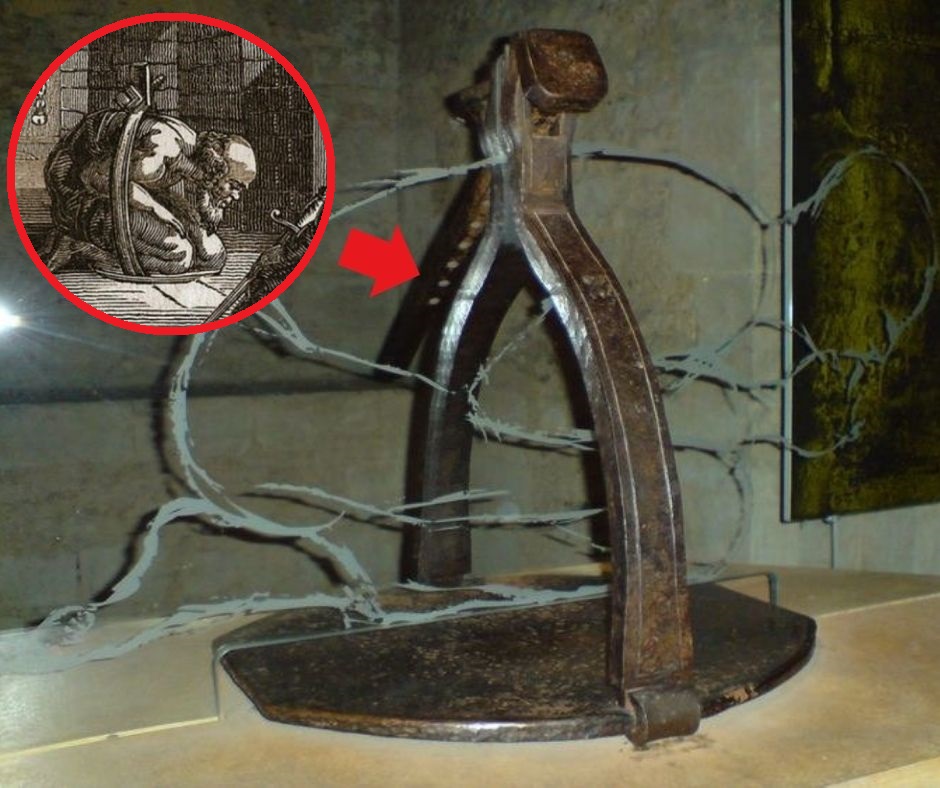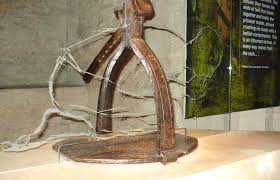The Scavenger’s Daughter, a lesser-known but equally brutal medieval torture device, stands as a testament to the era’s horrific creativity
The Scavenger’s Daughter, a lesser-known but equally brutal medieval torture device, stands as a testament to the era’s horrific creativity. Its name is a corruption of its inventor’s, Sir Leonard Skevington, who was the Lieutenant of the Tower of London during the reign of King Henry VIII. Unlike its more famous counterpart, the rack, which stretched the victim’s body to the point of dismemberment, the Scavenger’s Daughter worked on the opposite principle

The device was ingeniously cruel in its simplicity. A victim would be fastened to the frame by their neck, wrists, and ankles. The torturer would then use a screw or lever mechanism to gradually fold the device, compressing the victim’s body. The immense pressure on the chest and spine was excruciating, causing intense pain and a sensation of suffocation. The compression could be so severe that it would dislocate the ribs, sternum, and spine.

While the Scavenger’s Daughter was said to be a primary form of torture in England, historical records from the Tower of London suggest it was used far less frequently than the rack. Nevertheless, its existence underscores a dark chapter in human history, where the pursuit of information or confession led to the invention of devices designed to inflict maximum physical agony.
